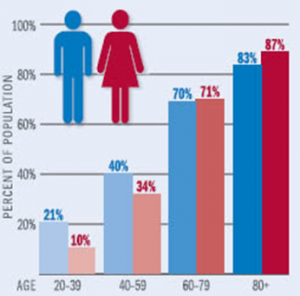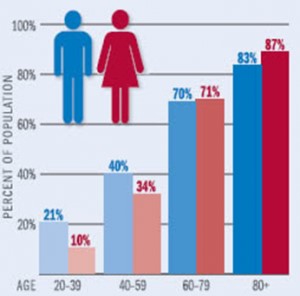Contribute
| ICC: Health And Wellness Awareness – Education With A Purpose |
Dr. Harshad Sanghvi
02/06/2023
As part of Indian Circle for Caring's 'Health and Wellness Awareness – Education with a purpose' series, here are 2 Heart Health Myths and Real Facts. Fact: One of the biggest misconceptions about heart disease is that it only or predominantly affects men, but heart disease is the number one killer of both men and women in the United States. While many women may think their greatest health risk is breast cancer, more women die from heart disease each year than from all types of cancer combined. Women have a lower risk of heart disease at early age compared to men because estrogen hormone protects them against developing blockages of the arteries. That advantage is lost after menopause, so they catch up very fast with men after age of 65 and have even higher risk than men at old age. Women do have atypical and unusual presentations of heart disease making it more difficult to diagnose unless we keep a high level of suspicion. Since 1984, more women than men have died each year from heart disease. By retirement age, 70% of men and women have cardiovascular disease, which includes coronary artery disease, heart failure, stroke, and hypertension. Risk continues to rise, and by age 80, 83% of men and an even higher percentage of women—87%—are affected. Fact: Although it’s true that chest discomfort is often a sign of a heart attack, there are more subtle symptoms of a heart attack that can occur without any chest pain, pressure, tightness or heaviness. You may experience pain or discomfort limited to only the left arm, both arms, neck, jaw, center of the back, across the shoulder blades, or in the stomach area. You may have no discomfort anywhere, and may get only unexplained shortness of breath, profuse sweating, nausea, or indigestion. Women are more likely to have atypical symptoms that can be easily ignored for noncardiac illnesses such as severe unexplained fatigue or weakness, shortness of breath, unusual sweating, nausea, vomiting, heartburn, and sudden dizziness. Almost half of all women who have heart attacks had none of the typical symptoms that men have. What is worse is 64% of the women who die suddenly of heart disease have no symptoms. So, we should exercise a higher level of suspicion for heart symptoms in women and diabetics.Myth#1 – Heart Disease Is a Man’s Problem.

Heart disease: Men vs. womenMyth#2 – Chest pain is the only warning sign of a heart attack.

You may also access this article through our web-site http://www.lokvani.com/
